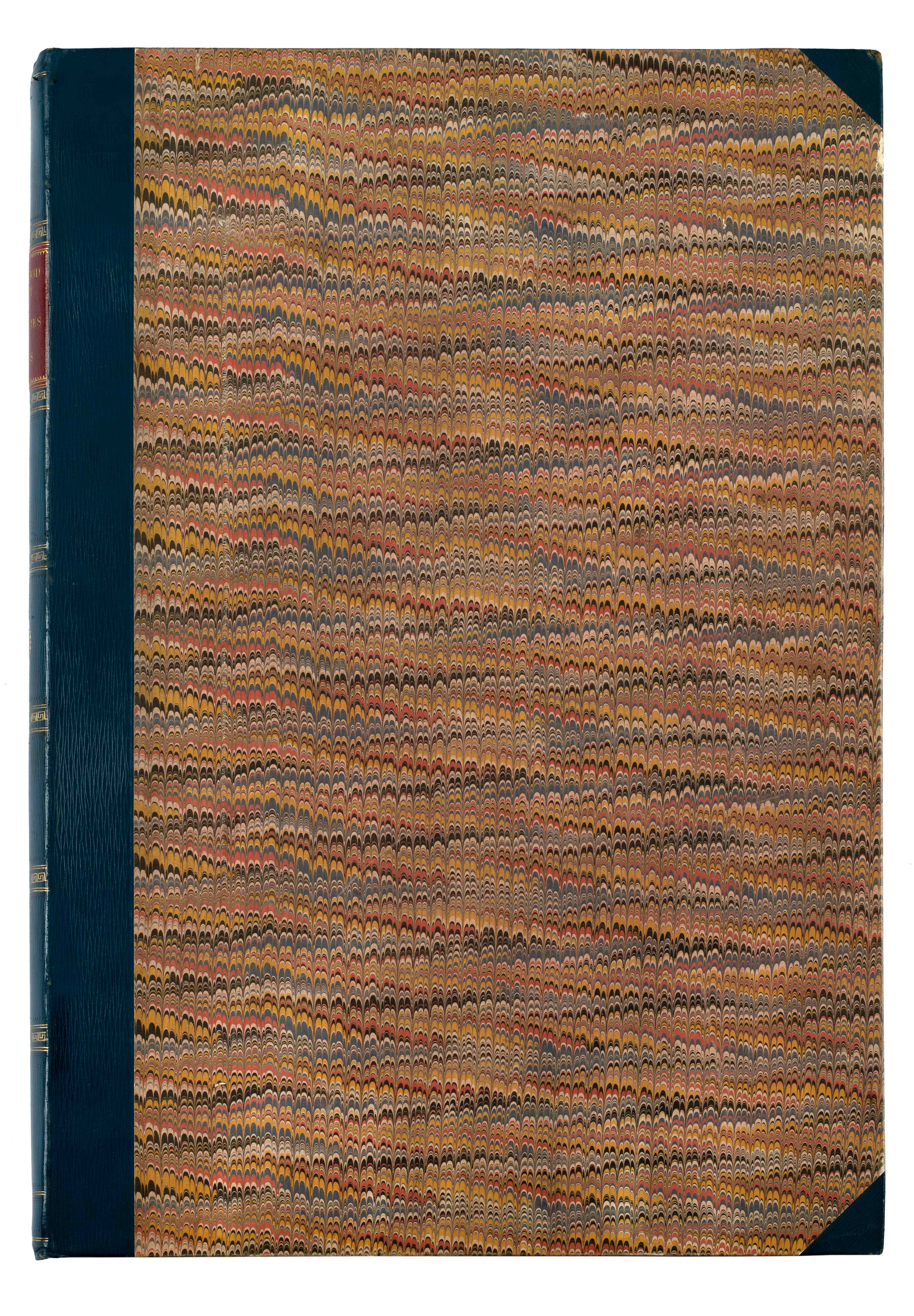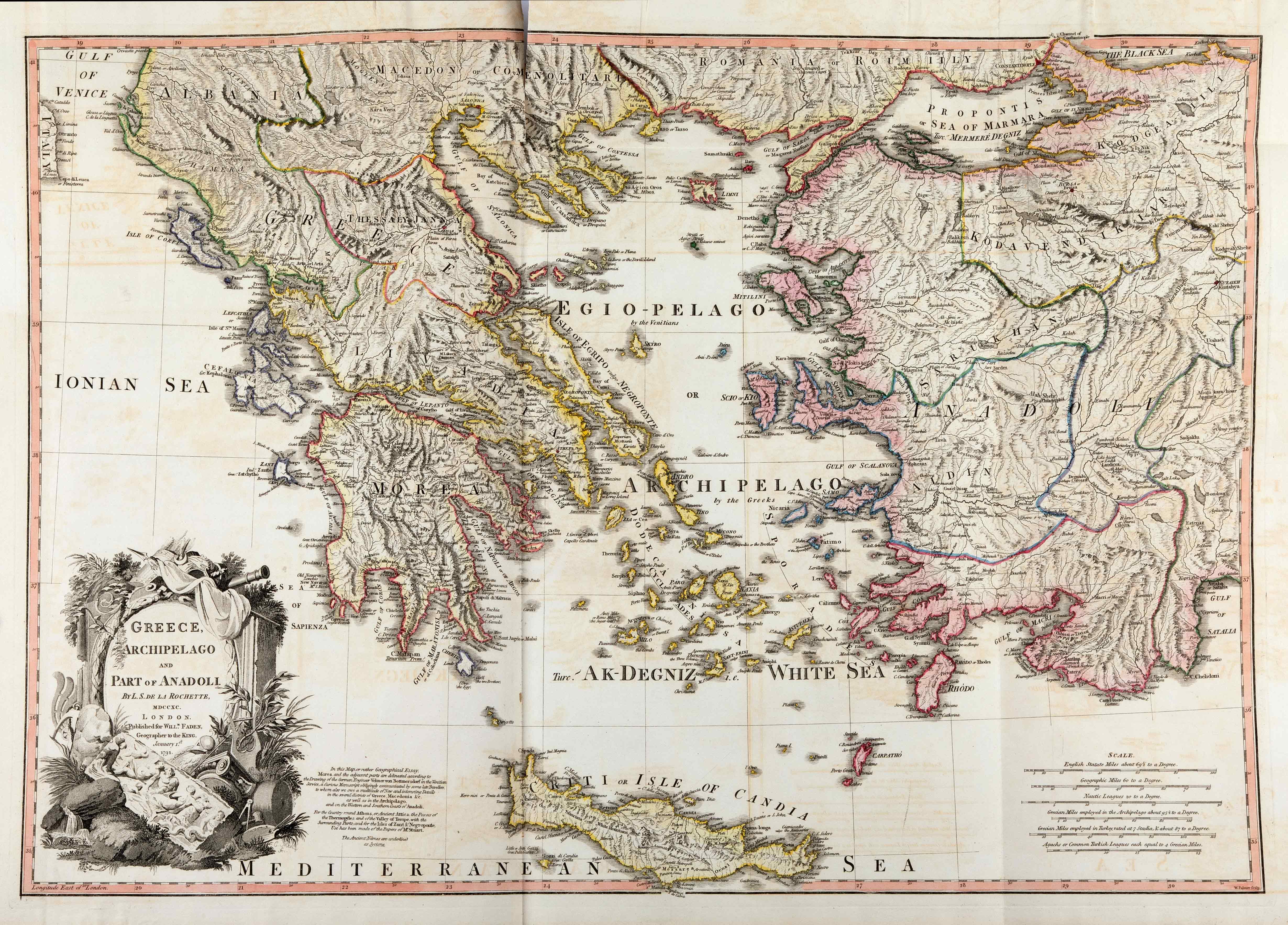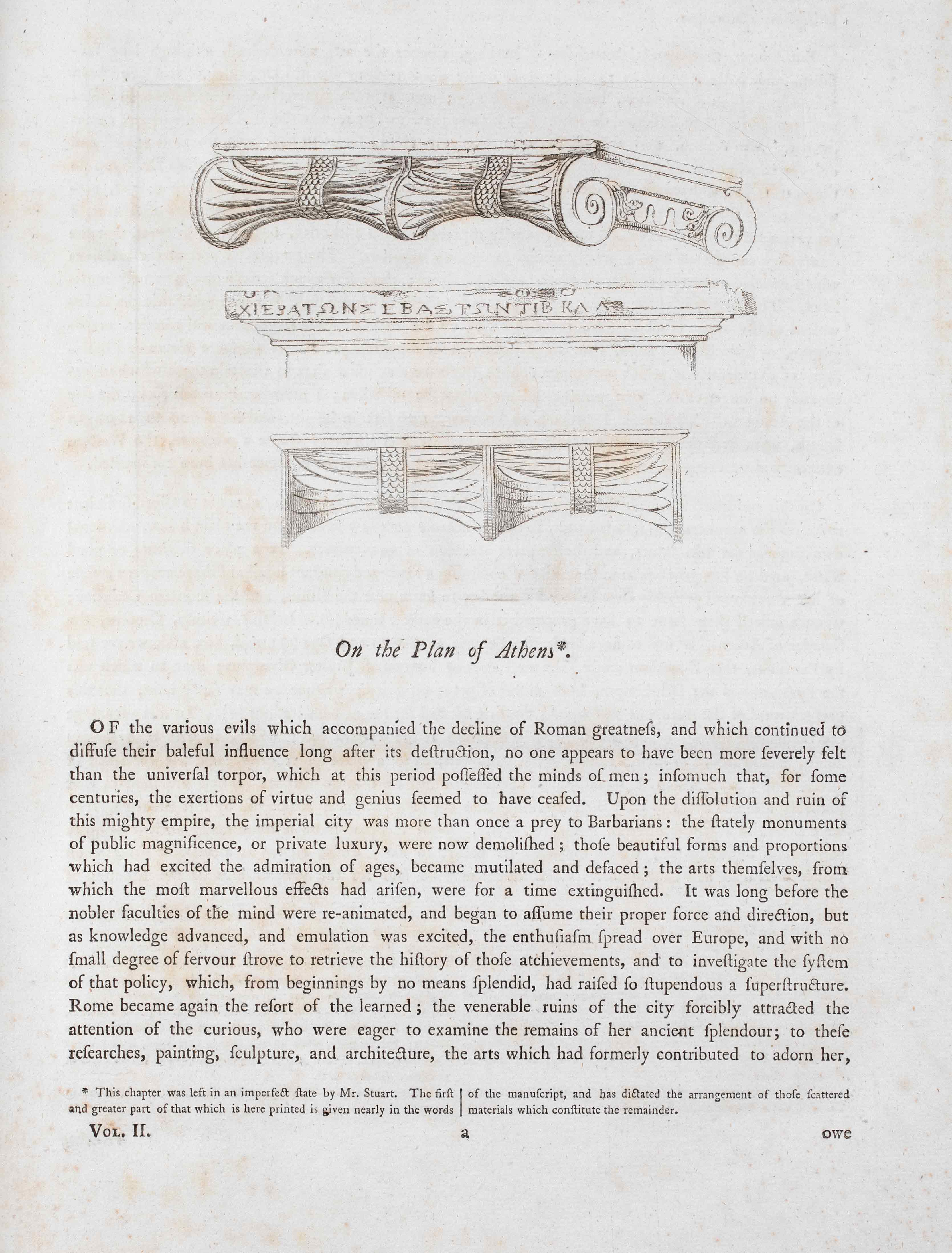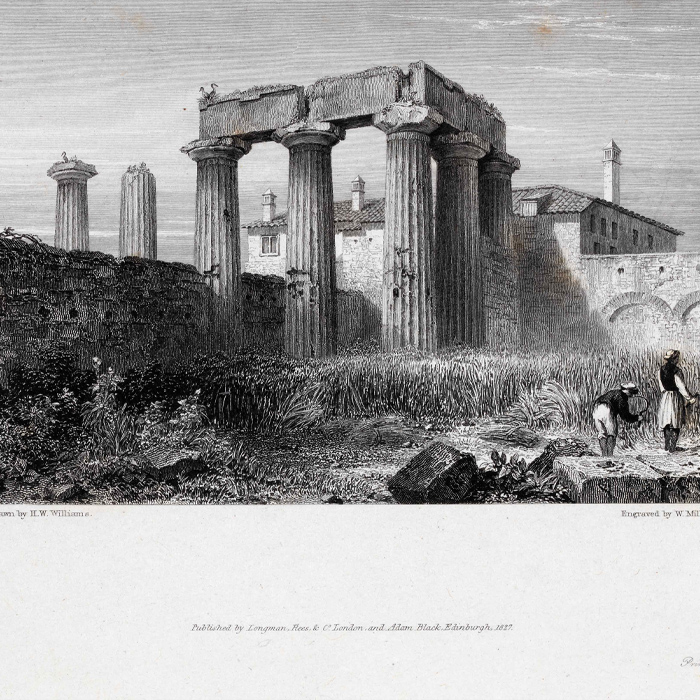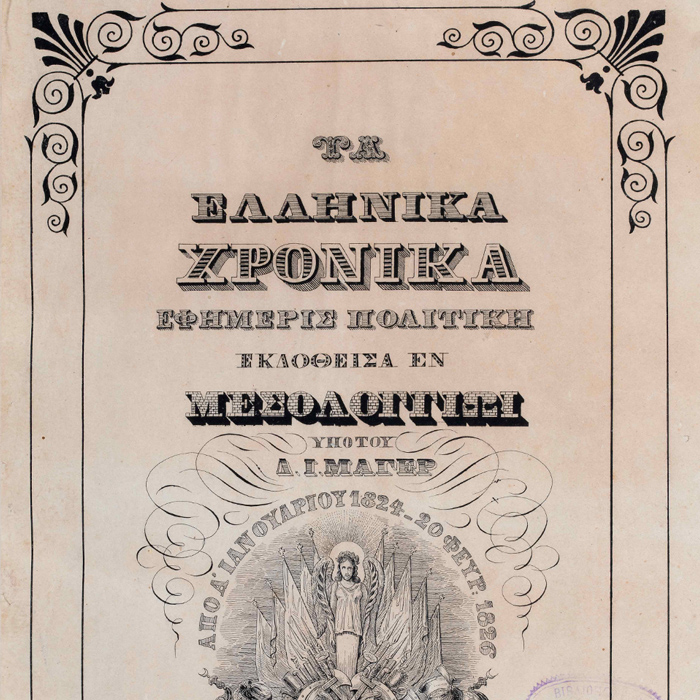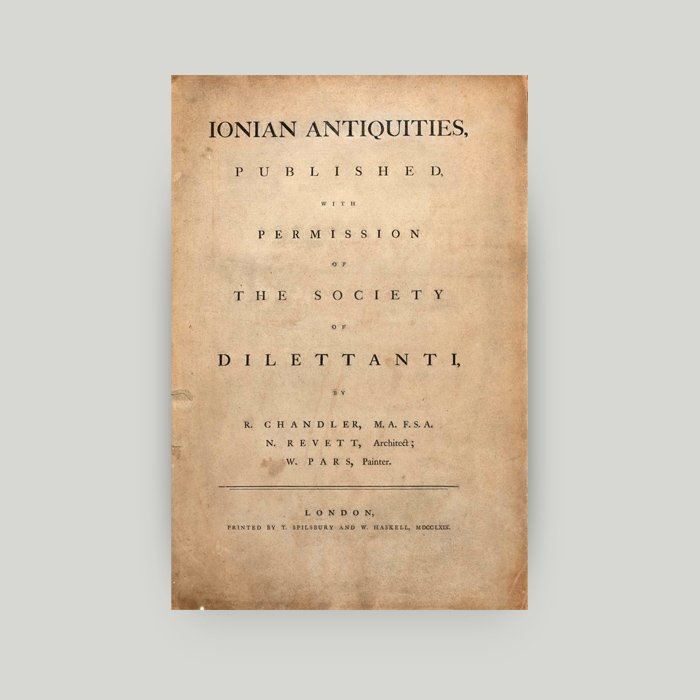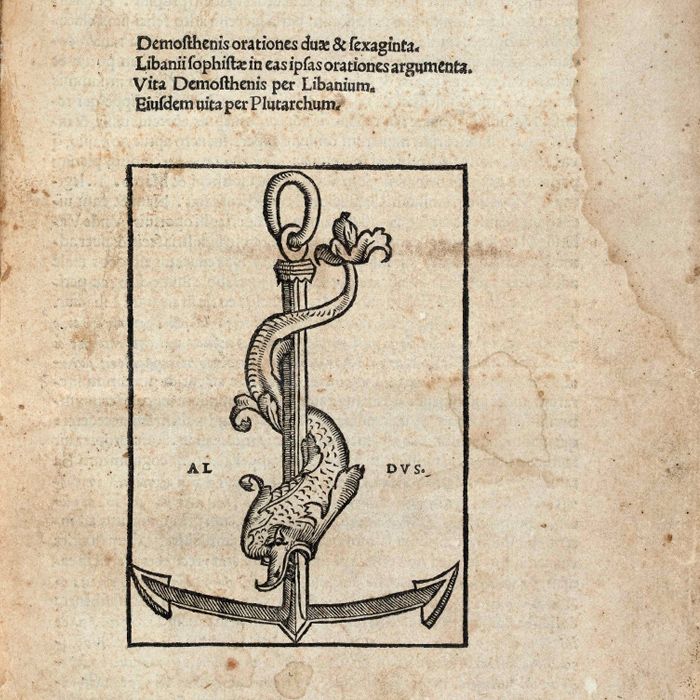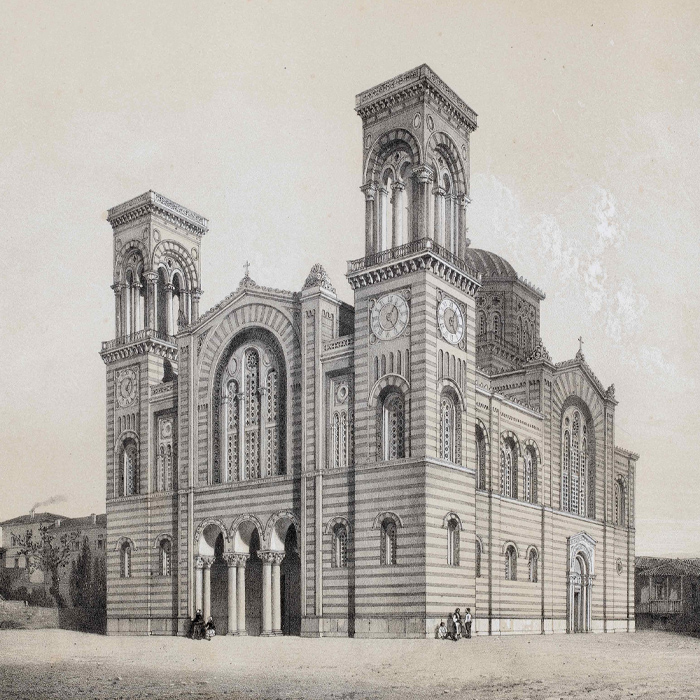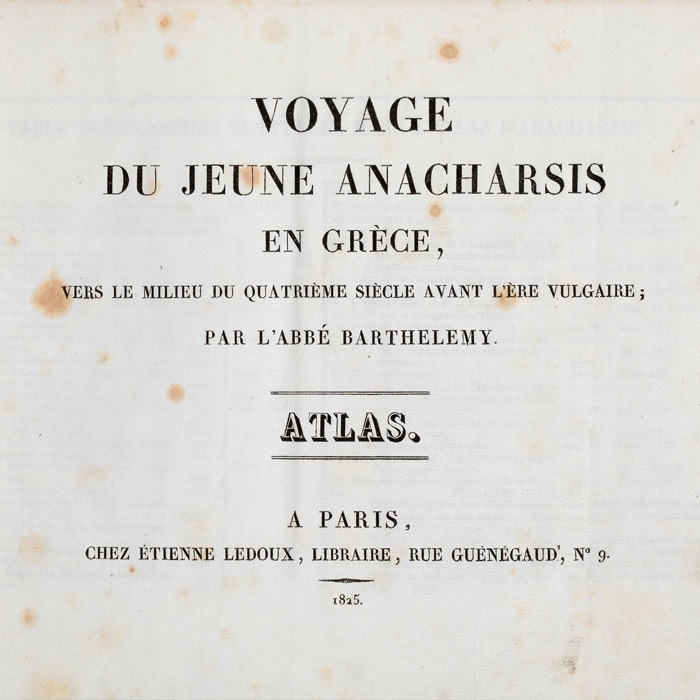The Antiquities of Athens. Volume the Third
The book The Antiquities of Athens. Volume the Third is the 3rd volume of the historical book of the 18th century, presenting the antiquities of Athens. It is a historical, archaeological expeditionary description with texts, tables and accurate drawings by the British architects James Stuart and Nicholas Revett. The 3rd volume features a very unique and significant hand-coloured map of Greece.
External appearance and contents
The book The Antiquities of Athens. Volume the Third is 37 cm (width) x 52 cm (height). It has a hard cover with colourful decorative elements and is in near fine condition.
It includes etchings and prints depicting monuments of Athens and other areas. Each monument is presented with detailed commentary, prints with a panoramic view, elevations and cross-sections, as well as drawings of architectural details.
It also features a hand-coloured map from 1791. It was drawn by William Faden, the personal cartographer of King George III. This map is of particular importance for the representation of the Greek territory.
A historical description of the monuments
The book is a historical archaeological expeditionary description with texts, tables and accurate drawings by the British James Stuart and Nicholas Revett.
Their work is rightfully considered the most iconic book of its time in reference to Ancient Greek architecture. This book essentially revived the interest in Classical Greece.
The Alpha Bank Library also holds volume 1 and volume 2 of the work.
An important archaeological description
The 3rd volume features explanatory texts, drawings and architectural plans of ancient monuments in Attica and other areas:
- In Athens, the Temple of Hephaestus (Thissio); the Temple of Olympian Zeus; Hadrian’s Aqueduct; the Panathenaic Stadium; the Odeon of Herodes Atticus, and a stoa (covered walkway) near the Choragic Monument of Lysicrates (Lantern of Diogenes).
- In Corinth, the Temple of Apollo.
- On the island of Delos, the ruins.
- In Thessaloniki, the Incantadas sculptures.
Ancient and new toponyms
At the end of the introduction, there is an important list with names of villages, settlements, monasteries and farms in Attica, with their corresponding ancient toponyms.
A 2nd list includes modern and ancient toponyms in Megarida.
There is also a list of stops and ports along the sea route from Skiathos to Evia. Moreover, all the ports, shores and capes between Kechries and Sounion are recorded.
A creative partnership
Architect and painter James Stuart (1713-1788) started painting at a very young age. He won many awards and scholarships, while also doing odd jobs to make ends meet.
Architect and designer Nicholas Revett (1720-1804) met Stuart in 1742. In April 1748, after a hiking trip to Naples, they devised a proposal to publish an accurate description of the Athens antiquities. Their proposal was funded by the Society of Dilettanti in Rome.
Stuart and Revett arrived in Greece in the fall of 1751 and stayed for approximately 3 years. They mainly worked in Attica, Corinth, Thessaloniki and Delphi. They did all their work on-site: Revett measured the monuments and Stuart drew them.
They depicted everything with great accuracy, and even proceeded to do some impromptu excavations. They also drew human figures in their natural environment.
A bitter rivalry
The 2 British architects were the rivals of French historian and traveller Le Roy, who studied the Greek antiquities during the same period. In fact, Le Roy managed to publish his own book, titled Les ruines les plus beaux de la Grèce 4 years ahead of the British.
Stuart and Revett criticised Le Roy’s book heavily. They claimed that his depictions were inaccurate and sketchy. After all, they had spent approximately 3 years in Greece, whereas Le Roy had only stayed for 3 months.
Sailing into Hellenism
The touring trend proved to be fundamental for the establishment of the modern Greek state. Hellenism, aside from a field of literary and philosophical research, became the means to revive the past. This was owing to:
- The increasingly frequent travels to Greece.
- The new archaeological discoveries.
- The quest for a more substantive and emotional relationship with the Greek present and past.
Ancient Greece: The first port of European history
The trend of touring began as a quest of a new European identity, based on humanistic education and classical studies. The travellers had a passion for antiquity, and followed in the footsteps of Pausanias, Herodotus, Plinius and others.
Ancient Greeks held a prominent position due to the virtues attributed to them. Moreover, they were the first and most critical link in the 3-part chain, past-present-future, of the European historical continuum.
The various approaches of antiquity were based on the common belief that history is a progressive and cumulative process: The past drives the present towards a better future.
The Alpha Bank Rare Book Collection is not open to the public.
However, you may visit the other collections of the Alpha Bank Library.
